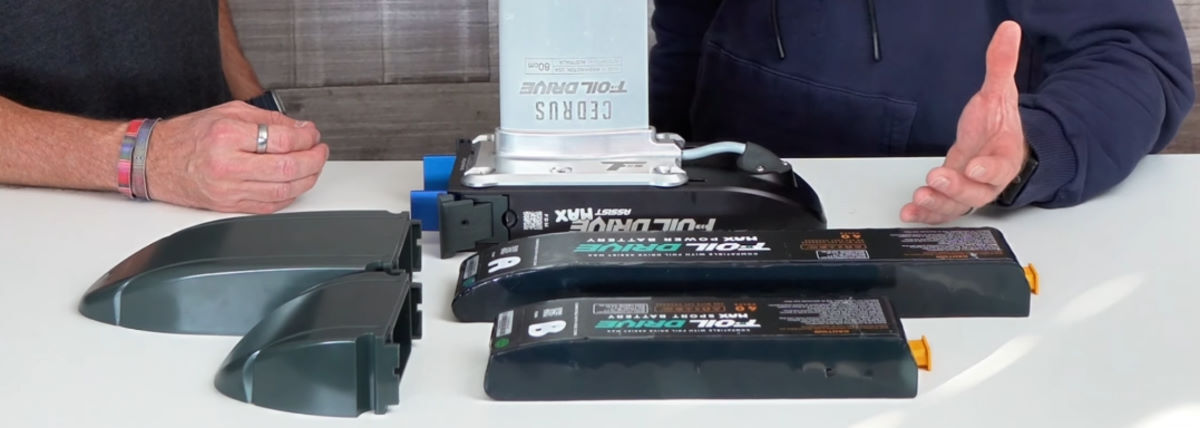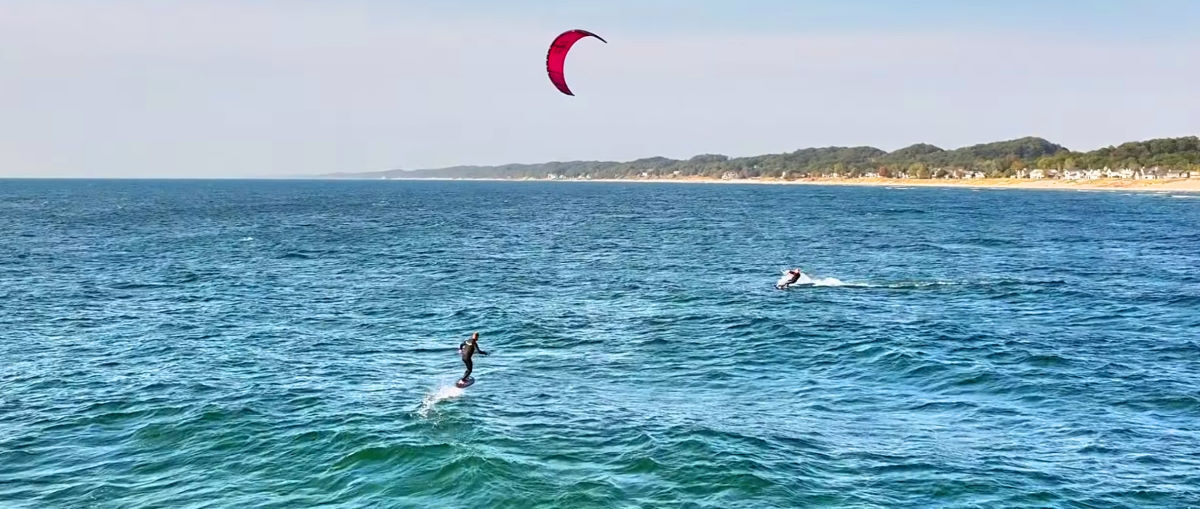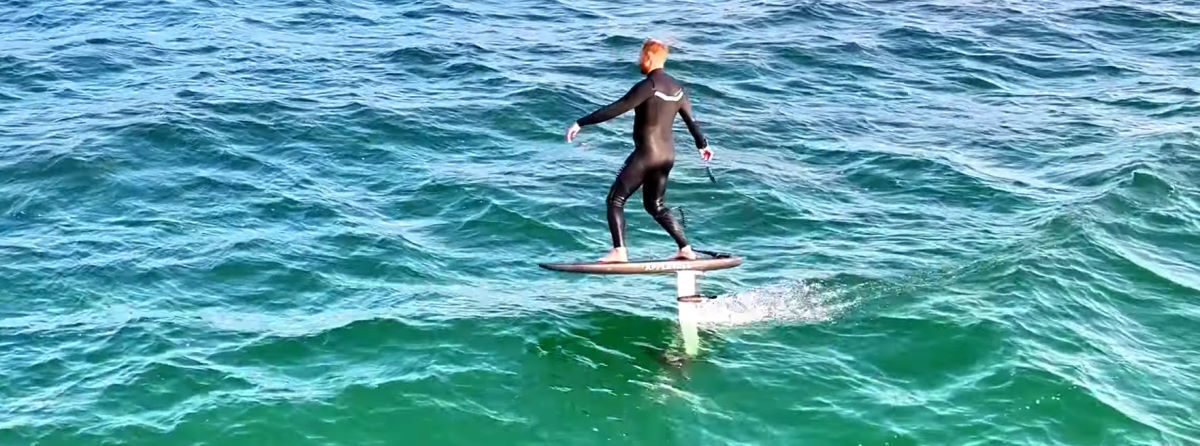Foil Drive MAX Battery Guide - Which One Do I Need?
If you're just getting into Foil Drive, the options can feel a little overwhelming. What's the difference between Gen 1 and Gen 2? Should I get the Max or the Slim? Do I need 3 props on my motor or are 2 enough? And perhaps most confusingly with four options now available for the MAX Gen 2 unit, which battery do I need?
The MAX is the larger unit of Foil Drive's current generation. While the Slim is lighter with a little less drag, the extra power and runtime the MAX offers is well worth it for the majority of foilers, so we're going to cover the batteries that are available for the MAX and help you decide which may be the right one for you.

When Foil Drive released the MAX Gen 2, there were only two batteries to choose from: the Power and the Sport. These are different lengths, so the MAX includes two nose cones to accommodate either battery. The longer is nose cone "A" and the shorter is nose cone "B".

Power Battery
The Power battery weighs about 5.8 lbs and will give you around 45 minutes of ride time. It uses the longer "A" nose cone. Although it's larger and heavier, it may be the best option for a good session if you need to ride out to your spot, whether that's to get out to the good wind for winging, or to get out past the break and sandbar for a downwind swell run and still have enough juice to get back.
Most people will pick up the Power Battery as their first battery since it does offer the most time out on the water.

Sport Battery
The Sport battery is the lightest of the MAX batteries at about 4 lbs. That's almost a 2 lb weight reduction under your board, along with the reduced drag from using the shorter "B" nose cone. That much weight does make a difference when you're prone foiling and pumping around, but it comes at the cost of runtime. While there are a lot of variables like rider weight, skill, gear, riding style, and weather conditions that will all determine how much time you'll get on a charge, if you're getting about 45 minutes on the Power battery, the Sport will give you closer to 30 minutes.
Now, if your spot is close to shore and you're only using your Foil Drive for a little boost every now and then, that might be plenty to last your entire session. In that case, the lighter weight and reduced drag will be worth the tradeoff on power. It really comes down to how much torque you need and how much you want to run your propeller.

Travel Battery
The Travel battery has a weight very similar to the Power battery: around 5.8 lbs. It's also the same size as the Power battery and uses nose cone "A" as well. Its main feature is that it breaks down into 3 pieces which each fall within airline regulations and allow you to fly with your Foil Drive. You do lose some cells to the space needed to connect each section of the battery, so you won't get quite as much runtime as with the Power battery, but if you want to travel with your Foil Drive, it's your only option.
While you wouldn't pick up the Travel battery to only use at your local spot, if you do fly and buy it for that, it makes a nice second battery when you're home. That'll help you get more use out of your investment even when you're not on vacation.

High Power (HP) Battery
In 2025 Foil Drive released a fourth battery option, the High Power battery. It's for the MAX Gen 2 unit and uses the same "A" nose cone as the Power battery. Although it's the same size as the Power battery, it does weigh about 100g more and uses newer technology to store more power.
It's the heaviest and most expensive battery option, so what do you get in return for that? It stores more power, so you can get longer sessions or, if you need more torque, you can unlock the full 28 percent Boost Mode on the remote when the HP battery is installed. You can get all the details on that and the HP Motor in this blog article.
If you're getting 45 minute sessions with the Power battery and you don't use the extra boost, you'll get sessions around an hour with the HP battery. If coming in to swap batteries isn't ideal, this is the way to extend your session.

So Which One Is Right for Me?
If you need to fly with your Foil Drive, the Travel battery is the obvious choice since it's the only one the airlines will allow. Otherwise, you'll want to look at one of the other three batteries since there isn't any weight or size advantage with the Travel battery and you do lose a little power.
If you're new to foiling or like long sessions with a good amount of assist, you'll probably be happiest with the Power or, if you can afford it, the High Power battery. Even as an experienced foiler, Ryan opts for the Power battery unless he's only surfing waves close to shore and doing a lot of pumping where the added weight does make a noticeable difference.

If you feel that you won't be using the assist a lot, or you have a Power battery and are consistently coming in with a good charge still on it, then the Sport battery may be your go-to. The shorter length means there'll be less drag so you can get on a plane and up on foil a little faster, and the lighter weight will be noticeable in the tight turns of prone foiling and while pumping.

Of course, we're here to help you feel confident you're making the right choice. There are a lot of situations we didn't cover here, or maybe you just want to talk it through with one of our foilers. We're happy to chat with you and make sure you're on the best gear for your session.
MACkite Subscription Links:
YouTube | Instagram | Spotify Oddcasts
Contact MACkite Below:
800.622.4655 | Kiteboarder@MACkite.com | LIVE Chat Messenger

Recent Posts
-
Hot New Releases: MACkite Brand Parawing & Mystic Majestic Ex Custom Harness
MACwing v.5 Beta Single Skin Single Use Jake and Ryan from MACkiteboarding unveiled an excit …1st Apr 2025 -
Code Foils 1250R, with Josh Ku and James Casey | Training, Gliding, and Light Wind Downwinding
Introduction: The Rise of the 1250R The Code Foils 1250R is the latest and largest addition to Co …1st Apr 2025 -
2025 F-One Rocket Surf Prone, Rocket Wing Crossover, and Rocket Midlength Boards
Mid-length foilboards are rapidly growing in popularity and could soon dominate the market, especi …27th Mar 2025




